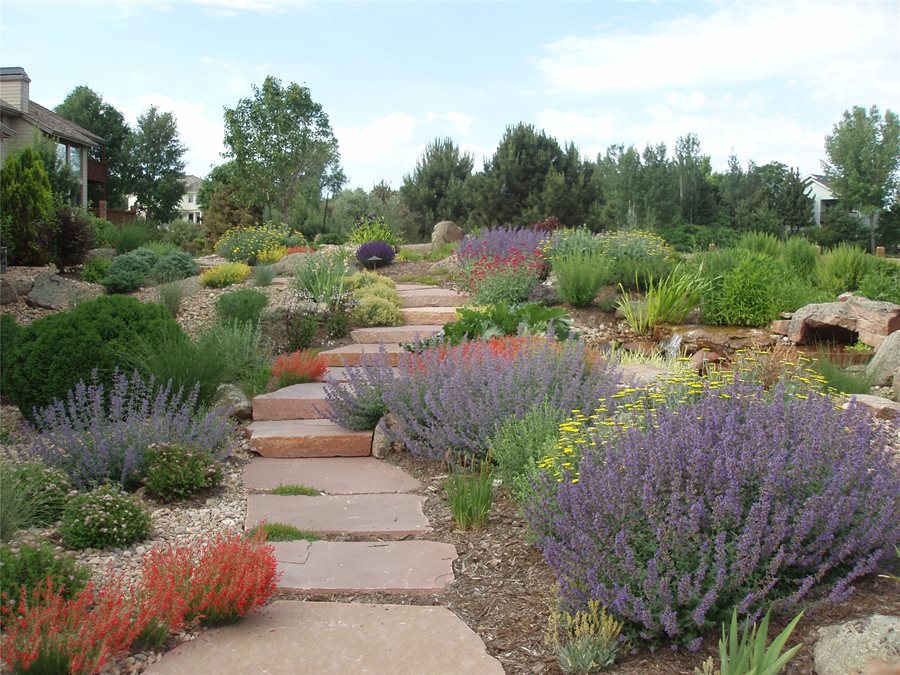If you have a Denver landscape design, you already know important it is to conserve water. But for many of us, that’s definitely easier said than done. But by utilizing xeriscaping throughout your landscape design, you can save water, save some cash in your pocket, and reduce your overall impact on the environment.
Here, we’re taking a closer look at xeriscaping and how this sustainable practice can be used on your Colorado landscape.
What is Xeriscaping?
According to National Geographic, xeriscaping can be understood as the practice of managing and designing your landscape to reduce, or completely eliminate, the need for additional water and an irrigation system.
By utilizing xeriscaping for your yard, garden, and overall landscape, you can dramatically decrease the amount you need to use. This can be done in many different methods. These include choosing certain plants, trees, and ground cover, repairing and maintaining, your watering system, and using smart watering practices.
Overall, this can help save this precious resource and decrease your footprint on the environment. Thus, a xeriscape landscape uses these practices and philosophies to protect the environment, and at the end of the day, even save you some cash by cutting down on your water use.
3 Key Benefits of Xeriscaping
There are many benefits to creating a xeriscape landscape design. It’s also important to note that this practice, as many believe, doesn’t mean you have to totally cut out water usage on your property. Rather, it just means that you’re smart with how you’re using your water.
Some of the top benefits of xeriscaping include:
· Reduce overall water usage: this is what it’s all about. The focus of xeriscaping is to reduce your water usage, which means that you could save on your water bills—especially during those hot summer months. Additionally, you won’t have to put so much time and effort into constantly watering your plants and lawn. Good for the environment, good for your budget, what more could you ask for?
· Preserve native plants: arid regions such as Colorado have native plants, trees, and grasses that have evolved to thrive in your climate. Why not take advantage of this perk and utilize them for your landscape design? More and more homeowners, for example, are opting for native grasses that are much easier (and cheaper) to sustain rather than that traditional glossy green yard. Some plants that work well in dry environments, and require little water, include sage, aloe, lavender, and cacti.
· Reduce your use of fertilizers and pesticides: xeriscaping helps the environment in many ways, including reducing your need to use excess fertilizers and pesticides. Since your native plants are in drier more appropriate soil, you’ll find far fewer weeds and you’ll see that they can survive well in your local climate. By reducing your fertilizers and pesticides, you’ll also be saving money in the long run.
Conclusion – What is Xeriscaping for a Landscape Design?
Now more than ever, it’s essential that we all do our part to preserve our natural resources. In Colorado and many other arid regions, this means cutting down on water usage as much as possible, including your landscape design.
This can be done in a variety of ways, including the plants and trees you plant, the ground cover you use, and what type of irrigation system you utilize throughout your landscape. Remember, xeriscaping doesn’t mean you can’t use any water, it just means you’re being smart with how you use it. Do your part and conserve water in your Denver landscape design.

